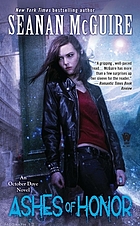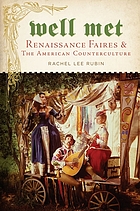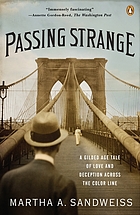I promised y'all book reviews, so by God there will be book reviews! Beginning with a run-down of the books I read during August and September, when I had neither time nor inclination to review them fully in posts of their own.
Bannon, Ann. Odd Girl Out (1957; reissue Cleis Press, 2001). I picked up Odd Girl Out in a used bookshop in Wellfleet and read it in an afternoon. Bannon's first lesbian pulp novel tells the story of first-year sorority girl Laura who falls head over heels in love with worldly senior Beth. Mix in a boy named Charlie, the fear of being forever branded "queer" and you have the makings of a classic college romantic drama (spoiler: at least nobody dies!).
Bowman, Matthew. The Mormon People: The Making of an American Faith (Random House, 2012). A synthesis of the past forty years' scholarship, rather than based on original research, Bowman's The Mormon People is an ambitious work seeking to tell a coherent narrative of the Church of Jesus Christ of Latter-Day Saints from its beginnings in the Second Great Awakening to the present-day. He is particularly interested in the relationship between the LDS church and American political culture, exploring the way early Mormon counterculturalism gave way to mainstream assimilation over the twentieth century. Though perhaps some members of the LDS church would disagree with me, I thought Bowman was respectful of believers without brushing some of the more difficult issues (for example the church's stance on women in the priesthood) under the rug. As with any overview, the historical issues are somewhat simplified -- but I particularly appreciated the way in which Bowman was able to discuss the historicity of the faith without disrespecting the value of belief among those who chose to join this infant American branch of Christianity.
Delblanco, Andrew. College: What it Was, Is, and Should Be (Princeton University Press, 2012). A seasoned literature professor at Columbia, Delblanco offers an articulate, thoughtful, and well-researched tour through the history of the American system of higher education, with a particular focus on undergraduate colleges. He's interested not only in how colleges came to be what they are today, but what we might want them to be moving forward. What, he is asking, is college for? His answer is a holistic one, which I am largely sympathetic with: college should not only be a place to acquire skills, but also a time and place to ponder questions of ultimate concern ("how shall I live?"), and that everyone -- regardless of socioeconomic class -- deserves that time and place. I was less impressed with his reflections on how to fix a system gone wrong (after a whole chapter on how tests are worthless as a measure of student learning, he suggests national tests at the college level as one possible way forward; I was nonplussed). Still this brief and passionate little book should be on the reading list of anyone interested in the history of education and/or people involved in higher education in any way.
Doherty, Thomas. Hollywood's Censor: Joseph I. Breen and the Production Code Administration (Columbia University Press, 2007). After reading The Accidental Feminist this summer, I was interested in learning more about the Production Code Administration. So footnote surfing brought me to Hollywood's Censor. Doherty, a film historian, provides an exhaustive cultural history of the PCA that -- at times -- seems to get buried under the weight of chronological detail. Using the life of Joseph I. Breen (a central figure in the development of the Code) as a through-line, Doherty traces the rise, influence, and fall of the Production Code from the 1920s into the 1960s. While for my taste the book could have contained less of Breen and more examples of films shaped by the PCA machine, it was fascinating to see how intimately involved in script development Breen and his associates were. Since it was much more efficient for the studios to have film projects pre-approved then to have them screened and censored post-facto, Breen often worked closely with script writers, directors, and producers (whether they wanted him to or not!) in crafting scenes that would convey adult themes without violating the Production Code. While I admit to skimming some sections, I did come away with a greater understanding of film-making in Production Code-era Hollywood.
McGuire, Seanan. Ashes of Honor (Daw, 2012). The latest installment in McGuire's October Daye urban fantasy series, set in San Franciso, did not disappoint as the perfect vacation read. Toby is called in when an adolescent changeling unexpectedly comes into her fae powers and unwittingly begins destabilizing the metaphysical connections between the various faerie realms. There was perhaps a bit less of May, Toby's fetch, May's girlfriend Jazz, and Spike the rose goblin, than I would strictly have liked to see ... but the developing relationship between Toby and Tybalt was all sorts of delightful. I'll be happily anticipating the next installment until such time as it appears.
Mohanraj, Mary Anne. Aqua Erotica (Three Rivers Press, 2000). A dollar cart find, this collection of water-themed, sexually-explicit short stories is the first erotica anthology I've read in awhile wherein more than one author was doing something interesting with their subject matter. I particularly liked the contributions by Carol Queen and Francesca Lia Block; I'm sure others will find their own favorites!
Penny, Laurie. Meat Market: Female Flesh Under Capitalism (Zero Books, 2011). I received an electronic review copy of Meat Market from Zero Books back in August. This slim (72-page) manifesta from British feminist Laurie Penny (aka Penny Red) explores in heavily Marxist language the way in which the modern capitalist economy has turn human bodies -- in this case specifically women's bodies -- into commercial products. Penny explores commodified sex, disordered eating, the pressures on women to perform gender in specific ways, and the un- or underpaid labor of care. While I think other writers have tackled these issues more comprehensively and perhaps more accessibly, I particularly appreciated Penny's clear stance against transphobic feminism, and her insistence that all women -- whether cis or trans -- face gender policing. I look forward to watching where Penny's work takes her from here.
Rubin, Rachel Lee. Well Met: Renaissance Faires and the American Counterculture (New York University Press, 2012). Rubin's study of the modern Renaissance Faire is part ethnographic study, part cultural history. Beginning with the origins of the Faire in the Southern California music and theater scene of the 1960s, Rubin traces the Faire from local radio station fundraiser to national (often corporate) institution. Well Met is a multi-layered study in cultural memory, as it explores not only the fair workers' and attendees' quest for a usable "Renaissance" past but also the way the Ren Faire has become a repository for memories and emotions about the Sixties counterculture. For those who have positive associations with the counterculture, the Faire has become a safe space for body positivity, sexual variation, artistic creativity, and a nomadic, in some ways communal life. For those who fear and/or dislike the values of the Sixties counterculture, the Faire becomes an object of loathing and derision. One of the most intriguing chapters of the book, in fact, explores the Faire "haters" who (Rubin contends) have constructed their identity around hating on the Faire much like passionate participants have constructed their identities around Faire work and attendance. I highly recommend Well Met to anyone with an interest in Renaissance Faires, the Sixties, arts and music scenes, cultural memory, and fandom culture.
Sandler, Lauren. Righteous: Dispatches from the Evangelical Youth Movement (Viking, 2006). I discovered this piece of journalism through an article about Mars Hill megachurch in Seattle published in the latest issue of Bitch magazine. Sandler's journey through the Evangelical subculture, with an eye toward it's appeal to young people, explores the way the post-80s Evangelical leaders have harnessed the counterculture energy of youth into a reactionary counterrevolution. These young people, the "Disciple Generation," as Sandler identifies them, are succeeding in making fundamentalist Christianity cool, hip, and a political force to be reckoned with. While an interesting read, I am growing tired of such journalistic accounts that frame fundamentalist evangelical culture as inherently "other." Particularly when they buy into the us/them mentality fundamentalists themselves employ: "secular" culture pitted against fundie Christian culture as if no other faiths or faith practices exist. I also think Sandler is too quick to assume young people are turning to the Christian right because "secular" culture has failed to give them something to believe in. Really? You couldn't do a little exploration into how left-leaning youth are building meaningful lives? Hopefully we'll soon start to ask more complicated questions of the counterrevolution than just "ohmigod what are they doing here?!"
Sandweiss, Martha. Passing Strange: A Gilded Age Tale of Love and Deception Across the Color Line (Penguin, 2009). It's been awhile since I had a case of scholar-writer envy as intense as I did reading Passing Strange. Sandweiss combs through the historical record for clues to help her reconstruct the story of high-profile turn-of-the-twentieth-century American scientist Clarence King who successfully concealed his marriage to Ada, a black woman, and the children they had together until after his death. His elite white friends thought him a bachelor; Ada -- as far as the historical record revealed -- believed her husband was a light-skinned black man who worked a series of jobs that often took him far from home. Through the story of Clarence and Ada, Sandweiss explores the nuances of race and race "passing" in America in the Reconstruction Era.




I am completely impressed with the quality and quantity of your reading and your ability to summarize and present it as you have here. Wow.
ReplyDelete